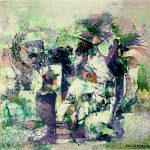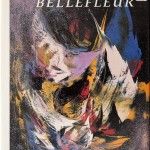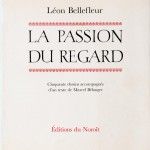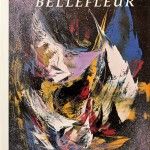Bellefleur, Léon

Leon Bellefleur was born in Montreal February 8, 1910 and has always shown a great interest in art. But, his father refuses him the right to study at the Fine Arts and encouraged instead to take another route. He studied at a regular school : Jacques-Cartier school. Then he began a teaching career that lasted nearly twenty-five years. In 1934, he married Rita Jolicoeur, with whom he had five children.
It will take place in 1946 to see his first exhibition, his works have been presented with drawings of children he teaches. A year later he published "The Case for Kids". In 1951 he won first prize for modern art at the Spring Exhibition at the Museum of Fine Arts in Montreal.
In 1948, in response to''Les Automatistes'', which he considered too radical principles, sometimes. He becomes a signatory of the manifesto "Prism of Eyes" (Prisme d'Yeux), written by the painter Jacques DeTonnancour, which calls for total freedom of expression in art .
In 1954 he left teaching to devote himself entirely to his art. In the fall of that year, he left Montreal with his wife to live in Paris where they will spend ten years of their lives. There will be several meetings, including André Breton and the Surrealists. He remains deeply affected, despite the fact that he has always denied being a "real surreal." In fact, we can recognize in his works, the result of two types of automation:
1. mechanical automation, resulting from strictly physical processes, such as tasks or ripples spatula.
2. automatism surrational, plastic writing not preconceived.
Especially the second track that guides the overall implementation of Bellefleur. "One form leads to another until a sense of unity, or the inability to go further without destruction. In running, no attention is paid to the content. The reassurance that is inevitably tied to the container justify this freedom ... "Bellefleur working on an ordering of pictorial chance and the subconscious whose outcome is as a lyrical abstraction.
By the mid-60s, Bellefleur returned to Quebec in the middle of the Quiet Revolution (Révolution Traquille). It was not until 1968 that the National Gallery of Canada presented a retrospective exhibition. Ironically, in 1977, he was the first winner of the Prix Paul-Émile Borduas, created by the Quebec government to acknowledge all the work of an artist's visual arts. In 1985, he received from the Société Saint-Jean-Baptiste, the Louis-Philippe Hébert prize awarded to major Quebec artists like Alfred Pellan and Jacques DeTonnancour who were his close friends.


